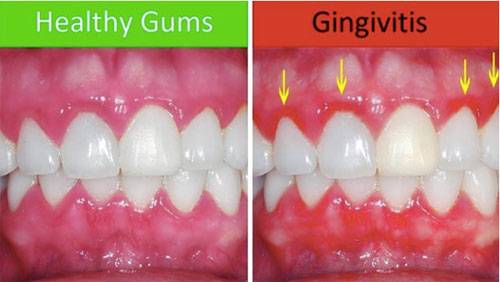Do You Need a Dentist? This is How to Tell If Your Gums Need Professional Help

Bleeding gums or loose teeth?
Find out what the real signs of gum disease are and when you should see a periodontist. Your gums' health affects more than just how your smile looks.
Gum Problems Don't Always Show Up Right Away
We often think about brushing and whitening our teeth, but it's just as important to take care of our gums. Your gums are what hold your teeth in place. If they start to fail, it can cause serious dental problems.
It's time to see a specialist if you've noticed that your gums feel or look different. A periodontist's job is to fix problems with the bone and gum tissue around your teeth. When regular cleanings aren't enough, think of them as your go-to expert.
Don't Ignore These Warning Signs
1. Your Gums Bleed Easily
Do your gums bleed when you brush or floss? It's easy to think of this as "normal," but it's often the first sign that something is wrong. When you bleed, your body is telling you that there is inflammation.
2. Redness or Swelling That Won't Go Away
Gums that are healthy don't stay swollen. If your gums are redder than usual, hurt, or feel tender, this could be a sign of gingivitis or a more serious form of gum disease.
3. No Matter How Much You Brush, Your Breath Still Smells Bad
If mouthwash, brushing, and gum don't work, bacteria under your gumline could be the cause of your bad breath. This smell won't go away on its own.
4. Teeth That Feel Loose or Don't Seem to Fit Right Anymore
As gum disease gets worse, it damages the bone that holds your teeth in place. If your teeth or bite change or move when you press on them, you need to act quickly.
5. Gums That Are Going Back
If your gums are pulling back, your teeth may look longer than they used to or you may be able to see more of them than you remember. This usually means that the tissue is breaking down or the bone beneath it is getting thinner.
Why This Is Important for Your Health
It's not just about keeping your teeth healthy. Periodontitis, or advanced gum disease, has been linked to heart problems, complications from diabetes, and even memory loss. Taking care of your gums may help protect more than just your mouth.
What Happens When You Go to the Periodontal Check-Up?
Going to see a periodontist doesn't mean you'll have to go through a painful procedure. It usually starts with:
· A talk about the symptoms you've seen
· Taking measurements of the spaces between your teeth and gums
· Looking at any X-rays to see how high the bones are
· Making a plan that works for you, whether that means a deep cleaning, medicine, or more care
What to Do About Gum Disease
Depending on how bad things are, treatment may include:
· Deep cleaning (scaling and root planing): gets rid of buildup that forms under the gums
· Antibacterial gels or rinses: helps stop infections
· Gum grafting: replaces tissue that has worn away
· Surgery or implants: may be needed in more serious cases, like when a tooth has already fallen out
What is good news?
A lot of cases can be treated without surgery, especially if you catch it early.
Take Care of Your Gums First
When life gets busy, it's easy to put off going to the dentist, but gum disease doesn't wait. This could be the push you need if something feels wrong or you haven't had a gum check-up in a while.
Please call us today to set up a visit.
We're here to help you protect everything that makes you smile, not just your teeth.

